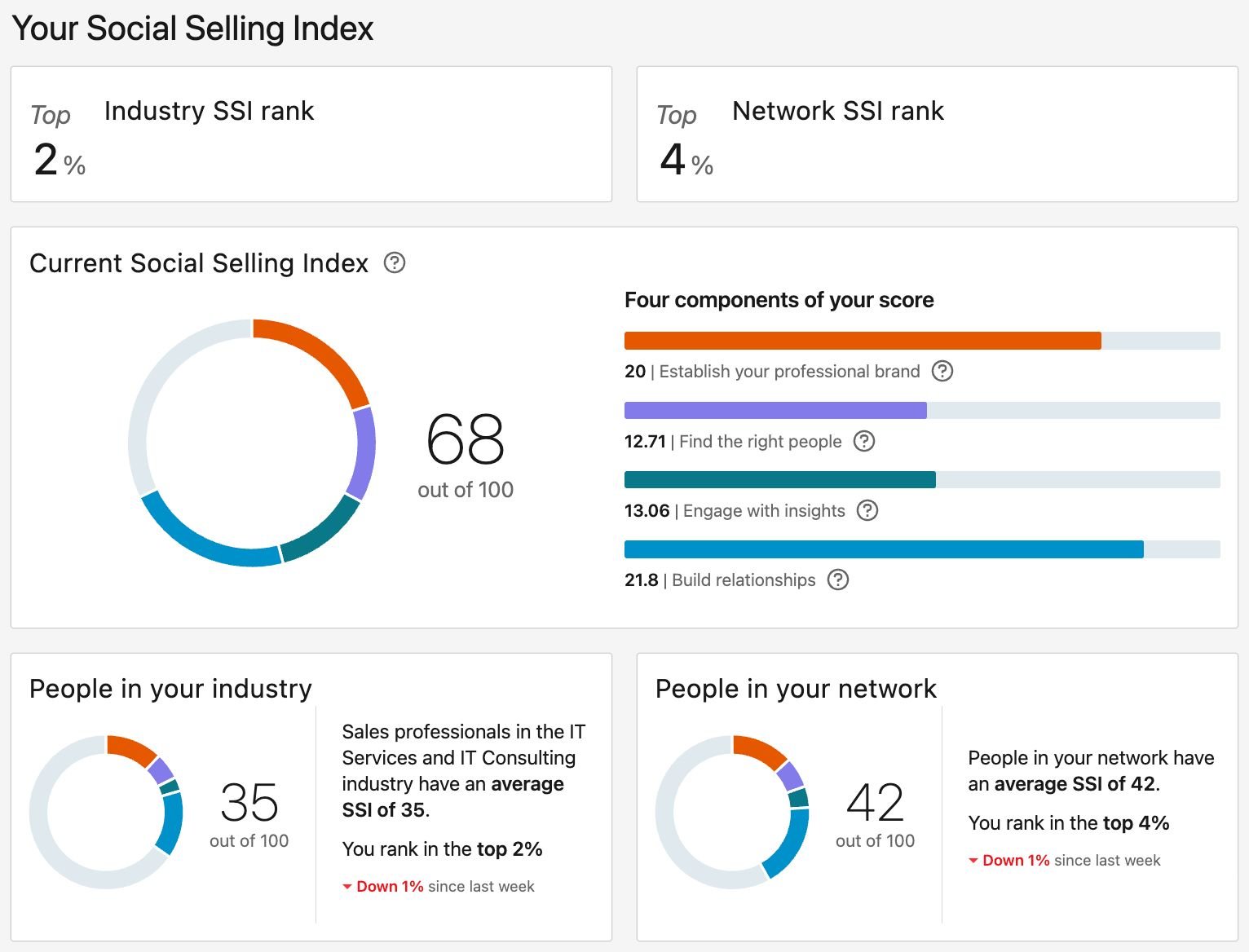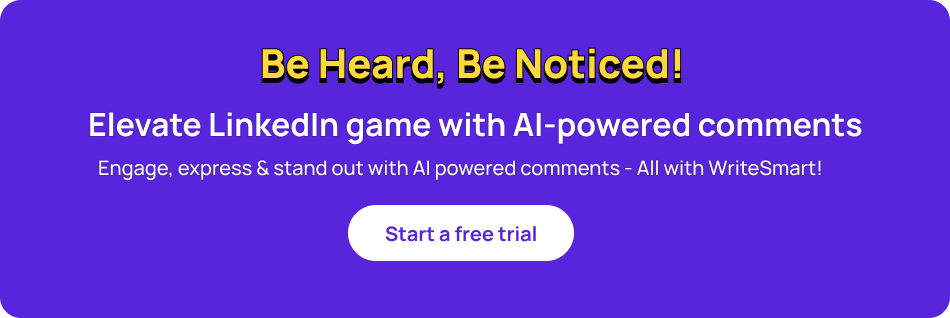Mastering Social Selling in 2024: A Comprehensive Guide to Boosting Sales on LinkedIn and Beyond
What is Social Selling?
Definition and Essence:
Social selling is the art of using social media platforms to find, connect with, engage, and nurture prospective customers. Instead of using traditional hard-selling tactics, it focuses on building authentic relationships, providing value, and fostering trust through meaningful interactions. By leveraging insights from social media, businesses can engage in informed, timely, and relevant conversations with potential customers, guiding them through the buying journey.
What Social Selling is NOT:
- It’s NOT About Direct Selling: Social selling isn’t about bombarding potential clients with unsolicited product pitches. It's subtler, emphasizing on relationship-building first.
- It’s NOT Just a Trend: With billions actively using social media, this isn't just a fleeting marketing trend. It’s a fundamental shift in the sales approach tailored for the digital age.
- It's NOT Limited to One Platform: Social selling isn't confined to LinkedIn, even though it's a popular platform for this approach. Instagram, Facebook, Twitter, and other platforms also offer vast opportunities for social selling.
- It's NOT Impersonal: One might think digital means less personal, but social selling thrives on personalization. It’s about understanding individual needs, challenges, and aspirations and then tailoring interactions based on these insights.
The true essence of social selling lies in its ability to humanize the sales process in a digital space. It’s about conversations, community, and connection. As the digital landscape continues to evolve, mastering social selling becomes imperative for businesses wanting to stay ahead in the game.
What is the Social Selling Index (SSI)?
The Social Selling Index (SSI) is a metric developed by LinkedIn to gauge a user's proficiency in weaving the principles of social selling into their LinkedIn activities. The SSI score offers insights into your social selling efforts and how effective you are at establishing your professional brand, finding the right people, engaging with insights, and building relationships.
Components of SSI:
- Establish Your Professional Brand: This evaluates how effectively you're positioning yourself as a trusted figure in your industry. Regular posting of meaningful content, receiving endorsements, and maintaining a complete profile can boost this component of your SSI.
- Find the Right People: It’s not just about connecting but connecting with purpose. This metric assesses how well you identify potential leads and decision-makers.
- Engage with Insights: Here, the focus is on sharing and engaging with content that resonates with your target audience. Commenting, sharing, and posting relevant industry news and insights can uplift this score.
- Build Relationships: Social selling thrives on connections. This component measures the strength of your network, emphasizing quality over quantity. It's about fostering meaningful relationships, especially with decision-makers and potential leads.
Checking Your LinkedIn SSI:
Want a peek into your SSI? LinkedIn makes it simple. By visiting https://www.linkedin.com/sales/ssi, any LinkedIn user can view their current Social Selling Index score, complete with a breakdown of each component. This page also offers a comparison of your SSI against peers in your industry and your network, giving you an understanding of where you stand.

What is a Good SSI?
The SSI score ranges from 0 to 100, with higher scores indicating a more effective use of LinkedIn for social selling. While an exact "good" number can vary by industry, a score above 75 is generally considered strong, showcasing effective social selling techniques. However, even more important than the score itself is consistent growth and improvement. Regularly monitoring and working to enhance each component of the SSI ensures a more rounded and impactful social selling strategy.
In the modern digital sales landscape, the Social Selling Index isn’t just another number. It's a reflection of your ability to engage, connect, and foster genuine relationships on LinkedIn. A high SSI is indicative of a sales approach that understands and leverages the power of social interactions in the digital realm.
Why You Should Care About Having a Social Selling Strategy
In today's digital era, the traditional avenues of selling are constantly evolving. Social selling has emerged as a vital strategy for businesses looking to connect authentically with their audience in the vast online space. Here are the compelling reasons, backed by data, why integrating social selling into your sales approach is indispensable.
Social Selling is Effective
- Data-Backed Efficiency: According to data from LinkedIn, businesses that harness the power of social selling create 45% more sales opportunities than those with a low social selling index (SSI). Furthermore, these businesses are also 51% more likely to meet or exceed their sales quotas. Such numbers underscore the sheer potential and efficacy of social selling.

- Deeper Relationships: Social selling allows brands to engage with leads and prospects on a more personalized level, fostering trust and credibility. Given that 78% of businesses employing social selling outperform their peers who don’t, it's clear that this trust translates into tangible results.
Audience Wants to Hear From Their Favorite Brands
Receptive Audience Awaits: Over 22% of social media users actively seek content from brands they admire. This isn't passive scrolling; it’s an active hunt for content from specific brands. This signifies a segment of the audience that's already receptive, already engaged, and potentially ready to move further down the sales funnel.

Meeting Expectations and Building Connections: Instead of casting a wide net, social selling focuses on reaching this specific audience segment. By presenting them with valuable content, timely interactions, and personalized experiences, brands can transform this receptiveness into loyalty and, eventually, sales. It's about being present where the audience is, interacting in meaningful ways, and building genuine connections.
Tapping into Shared Opinions and Communities: The majority of users online are seeking more than just brand content. Nearly 24% share and discuss opinions, while around 21.7% seek like-minded communities. Social selling can navigate these nuanced conversations, connecting over shared interests and values.
Customers are Already Buying on Social; Claim Your Slice
The Expansive World of Social Media: Sheer Volume: Over 4.74 billion people are active on social media, with an addition of 190 million users in 2022 alone. This massive audience signifies endless opportunities for brands.
From Inspiration to Purchase: Seeking Ideas: 27% of users turn to social platforms for inspiration and ideas for purchases.
Ready to Buy: A slightly lower but significant 26.2% are on the prowl for specific products to buy.
Brands and Discovery on Social Media:
Almost 49.2% of users engage with social media to explore brand content.
With 77% of users discovering new products on these platforms, brands have vast potential to make an impression.
Stay Ahead: Your Rivals Are Already Harnessing Social Selling
In today's aggressive digital market, leveraging social selling is not just beneficial, it's essential. Many influential brands have tapped into this, engaging and converting potential customers across popular social platforms. The stakes? A share in the staggering global sales via social media, which totaled an estimated 992 billion U.S. dollars in 2022, as cited by Statista.

Consider these compelling statistics:
- A dominant 89% of B2B marketers utilize LinkedIn for lead generation.
- Furthermore, 62% of B2B marketers report that LinkedIn generates leads at twice the rate of other social platforms.
- 62.3% of users follow or research brands.
- Over 200 million users view a brand profile daily.
- 50% shop weekly, and 70% seek their next purchase on this platform
- 54.9% of users research brands and products.
- By 2023, 37% are expected to make purchases via Facebook.
YouTube
- An impressive 87% of viewers trust content creators' recommendations.
If you're not already diving into social selling, it's crucial to recognize that competitors are not only capitalizing on these trends but also potentially capturing your audience.
3 Essential Steps to Master Social Selling on LinkedIn
Elevate Your Professional Brand:
- Define Your Persona: Your LinkedIn profile isn’t just a CV; it's your digital footprint in the professional world. Ensure that it portrays your most up-to-date roles, accomplishments, and aspirations.
- Position Yourself as a Thought Leader: Regularly share insightful articles, case studies, and industry updates. Engaging with other thought leaders and joining pertinent LinkedIn groups can further bolster your standing in your industry.
- Interactive Engagement: Don’t just post; participate. Respond to comments on your content and jump into relevant discussions in your field.
Fuel Engagements with Rich Insights:
- Content is King: But context is its kingdom. Share not just any content but information that resonates deeply with your target demographic. This could be in the form of industry-relevant articles, how-to videos, or even infographics that break down complex topics.
- Spark Conversations: Instead of just sharing, pose questions, seek opinions, and initiate discussions. The goal is to create a two-way dialogue that cements your role as an industry influencer.
- Stay Updated: The business world evolves constantly. Keep abreast of the latest trends and adapt your content strategy accordingly.
Forge and Fortify Professional Relationships:
- Quality Over Quantity: It’s not about how many connections you have but how meaningful those connections are. When you connect with someone, take a moment to send a personalized message.
- Nurture Your Network: Engaging with your connections isn’t a one-off task. Regularly comment on, like, and share their posts to foster a mutual relationship.
- Harness LinkedIn’s Power: Remember the potential of this platform. With 62% of B2B marketers crediting LinkedIn for generating leads at twice the rate of other social channels, it’s clear that sustained, strategic engagement can lead to tangible business outcomes.
In a digital-first world, LinkedIn stands as a key platform for professionals to connect, converse, and convert. By mastering these steps, you're positioning yourself at the forefront of the social selling revolution.
Best Practices for Effective Social Selling
Practice Active Listening:
- Tune Into Conversations: Don't just hear; truly listen. By paying close attention to your audience's dialogues, questions, and feedback, you can better understand their needs and aspirations.
- Engage with Comments and Direct Messages: Ensure you are responsive to comments, mentions, and direct messages. A timely response not only shows you're active but that you also value their input.
- Leverage Analytics: Use platform-specific analytics to gauge content engagement, trending discussions, and feedback patterns. This data-driven approach can inform and refine your social selling strategy.
Lead with Value:
- Provide Before You Ask: Before making any sales pitch, provide your prospects with actionable insights, recommendations, or unique content that addresses their specific challenges or interests.
- Share Knowledge Generously: Establish yourself as a trusted resource by sharing industry news, how-to guides, case studies, and more. Remember, the goal is to be seen as an expert, not just another salesperson.
- Hold Value-driven Webinars and Live Sessions: Engaging directly with your audience through webinars or live sessions can offer them immediate value and position you as an accessible expert in your field.
Embrace Personalized Outreach:
- Avoid the "Copy-Paste" Trap: Generic messages often get ignored or, worse, annoy potential clients. Make sure each message is tailored to the specific individual or company you're reaching out to.
- Deep Dive into Profiles: Before reaching out, take the time to study a prospect's LinkedIn profile or other social media pages. Mentioning a shared connection, recent achievement, or mutual interest can open the door to a genuine conversation.
- Segment and Target: Categorize your prospects based on industry, job role, interests, or previous interactions. This allows you to craft more relevant content and outreach messages for each segment.
To truly excel in social selling, it's essential to blend the art of human connection with the science of digital strategy. By adhering to these best practices, you can navigate the social selling landscape with finesse, building lasting relationships and boosting sales in the process.
